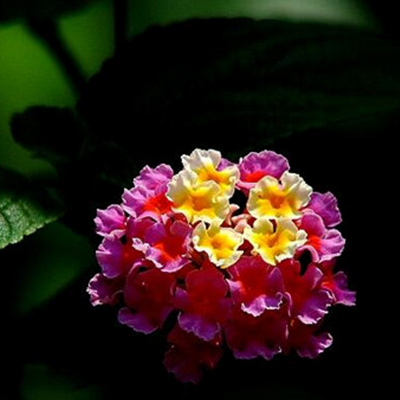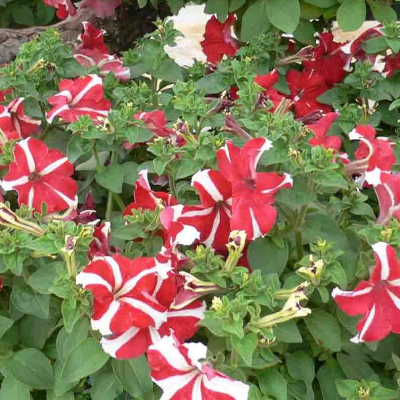How roses take root by cuttings what is the temperature for quick rooting?
Roses, which many people like to breed, this rose can also be propagated through cuttings. How can roses take root quickly by cutting? What is the temperature at which roses take root:

How roses take root quickly by cuttings:
Regardless of water or soil cutting, you should first cut the flowers, long roots depends on the temperature, it is recommended to use vermiculite or river sand cuttings. About 20 days if the conditions are right. The survival rate of water transplanting is lower. The specific practices are as follows:
First of all, remove the flower and the stem of the single leaf near the flower, as well as the original wound. Take about three sections as a section, pay attention to flatten the wound with a sharp blade, insert it into clean water or wet sand, and pay attention to changing water or watering. Auxin drugs can be added if necessary. After the root length is about 2-3cm, it can be transplanted.
A very simple rose cutting method:
1. Choose the flower branches that fail (the branches are stronger, and the old branches of the next year are the best)
2. Cut off about 15cm-20cm. Pay special attention to oblique cutting when cutting.
3. Remove the remaining leaves from the branches and leave only the top one or two leaves
4. Cut off the flower head diagonally
5. In the soft and moist soil, the branches should be inserted into the soil about 4 or 5 centimeters, and then it is very simple to keep the soil moist. During this period
The leaves left on the branches may turn yellow.
Don't worry, just cut it off. After three to four weeks, you will find new buds on the branches.
What is the temperature at which roses take root:
The branches are immersed in water and placed in a place where 15 ℃-20 ℃ and sunlight can be seen to cause them to grow roots. During the root promotion period, the water in the container should be changed every 2-3 days, and when the epidermis of the new root on the branch becomes light yellow or light brown, it can be carefully planted in a nutrition bag for culture.
About rose cuttage rooting method introduced here, this is not a long experience, we should pay attention to the rooting temperature of rose cuttings.
How to rooting of Rose Cuttage Fast rooting method of Rose Cuttage
Rose flowers Rong beautiful, diverse, often open at 04:00, deeply loved by people, many people will raise rose, that rose cuttings how to take root quickly? Let's take a look at the fastest rooting method for rose cuttings.
The fastest rooting method of rose cuttage
1. Choose cuttings: choose healthy branches without diseases and insect pests, usually about annual cork branches, each stem is 7cm to 12cm, the stronger the cuttings are, the easier it is to take root.
2. Branch cutting: cut the lower end of the cutting branch into a bevel, remove all the leaves at the bottom and leave 2 or 3 leaves at the top. The cutting scissors must be sharp and not rusty, and it is best to wipe them with alcohol first.
3. Cutting method: the branches are soaked in rooting solution or stained with a little rooting powder before cutting, and then the branches are inserted to prepare clear water, preferably Rain Water, cold boiled water or tap water after drying for 2 or 3 days.
4. Post-cutting management: the water of cutting rose branches should be changed every 3-5 days. It is best to pour 1cm 2 and then add enough water. After growing roots, there is no need to change them. When the roots grow to about 4-5cm, they can be transplanted into the soil.
What are the propagation methods of rose flowers?
1. Grafting: rose is commonly used as rootstock in rose grafting, which is divided into bud grafting and branch grafting. The survival rate of bud grafting is higher, generally from August to September. Proper shading after grafting can be healed after about two weeks.
2. Sowing: rose flowers can be sowed in holes or furrows, and usually sprout in the first and middle of April. The transplanting time is divided into spring planting and autumn planting, generally after falling leaves in late autumn or before sap flow in early spring.
3. Ramet: the rose ramet is mostly carried out in early spring or late autumn. The method is to dig out the whole rose with soil for ramet, each plant has 1 to 2 branches and slightly with some fibrous roots, plant it in the pot or open field, it can bloom in the same year.
4. Cutting: roses usually cut mature branches with 3 to 4 buds for cutting when roses are dormant in early spring or late autumn. if the tender wood cutting should be properly shaded and keep the seedbed moist, it can take root in 30 days after cutting. the survival rate is 70% to 80%.
5. Crimping: rose striping is generally carried out in summer, bending the rose branch from the matrix and pressing it into the soil, peeling off the lower half of the bark, exposing the end of the branch, and so on, after the branch has adventitious roots and new leaves, and then cut off from the mother.
How to cultivate Chinese rose and grow well
1. Soil: rose does not have strict requirements on soil, but it is better to use slightly acidic soil rich in humus, generally choose fertile, loose and well-drained soil, have holes in the bottom of the basin, and pad some gravel to maximize the drainage capacity.
2. Lighting: the rose likes the environment with plenty of sunshine and air circulation, so remember not to breed the rose in a dark and damp place. In order to avoid the bright light, you can temporarily put it in the shade place, and pay special attention to shade during the flowering period, otherwise it is easy to dry the flowers.
3. Temperature: rose likes to grow in a warm environment, but it is afraid of heat, so it is necessary to pay attention to proper shade when breeding in summer, and the most suitable temperature is 22-25 ℃ when it is hot.
4. Watering: rose likes a warm and humid environment, and the air humidity of 75% is the most suitable, and it can also withstand slight drought. Basically follow the principle of no drying and no watering, and watering time and amount of water should be carried out according to the soil conditions in the basin.
5. Fertilization: rose is the peak growing season after May. It should be topdressing every 10 days. No special purchase of fertilizer is required. Fish juice and vegetable leaf juice that are mature and fermented can be used. The ratio of fertilizer to water is about 3:7, and fertilization lasts until November.
6. Pruning: rose has long vines that allow it to grow freely, which not only does not form, but also affects growth and flowering, so it should grow well on a pre-arranged support frame as needed to form a unique ornamental shape.
7. Pest prevention: rose flowers can be sprayed with 15% quicklime mixed with water or sterilized liquid for pest control in peacetime. From July to August, they should be checked and controlled in time. Chemicals should be sprayed 2 or 3 times a week to prevent them. Diseased branches and leaves should be cut off in time.
Rose cuttage planting method, potato for rooting of rose cuttage (illustrated example)
Cutting roses can not make them sprout quickly, because the branches have no external source of nutrients, germination will consume nutrients in the branches, and there are no nutrients to take root. If there are healthy and strong branches for cutting, a good start is half of success, so branches with diseases and insect pests should be avoided, while leaves with thick, developed and full leaves should contain sufficient nutrients and are more likely to be successful in cutting.
Cutting the roots of plants such as roses in potatoes for a period of time and then burying them in the soil can improve the survival rate of plants.
Rose cuttage steps
Step 1: first cut off the rod of the rose.
Step 2: remove all the leaves from the rose stalk to avoid the loss of nutrients and moisture.
Step 3: insert the rose stick into the potato.
Step 4: dig flower trough, apply nutritious soil, and prepare to plant flower branches.
Step 5: bury it in the soil.
Step ⑥: finally, put in the soil, step on the soil, expose some of the rose stalks, and finish.
Rose cuttage precautions prepare cuttings to choose strong and substantial side branches of the same year. The cuttings should be put into water immediately after cutting to prevent wilting. Leave 1 or 2 pairs of leaves, not too much, to reduce water evaporation. Media preparation
With imported peat as the main medium, 80% imported peat + 20% perlite is generally used. The pH value should be kept between 5.5 and 6.0. The medium should be filled as much as possible before the basin to prevent the medium from settling after watering. In addition, the first watering should be divided into several times so that the medium can be completely watered and the structure of the medium can be avoided. After pouring thoroughly, let the medium be placed for several hours and then put on the basin to achieve the optimum humidity of the basin soil. On the 16th day after potting, pour enough water.
Cutting time
Rose softwood cuttings are generally carried out from mid-June to mid-August, depending on the growth status of seedlings. It is carried out in the middle and late July, but it is necessary to avoid continuous overcast days, because the temperature, humidity and light of continuous cloudy days do not meet the conditions needed for cuttings to take root.
Cuttage seedling
It is best to choose cloudy days or sooner or later. The cutting density should not be too large or too small. If the density is too high, the ventilation effect is not good, and it is prone to diseases; if the density is too low, resources will be wasted. Generally, it is appropriate to insert 450 plants per square meter. The depth of insertion into the matrix should be about 3-2-3 of the cuttings, too shallow and easy to lodge, too deep and easy to mildew. Spray water immediately after cutting, so that the cuttings are in close contact with the substrate.
Transplanting management
Choose cloudy days or transplant sooner or later. Before transplanting, pour the seedling bed with water to make the bed soft, so as not to damage the root system during seedling emergence. The seedlings were dug up with a shovel and gently shaken off the matrix. When planted, the plant spacing was 10-15 cm and the row spacing was 30-40 cm. Water immediately after planting, then irrigate continuously for 2 or 3 times, and remove weeds and loosen the soil in time after slowing down the seedlings to ensure the healthy growth of rose seedlings.
The main points of cutting roses 1. Choose full and disease-free branches
If there are healthy and strong branches for cutting, "a good beginning is half of success", so branches with diseases and insect pests should be avoided, while leaves with thick, developed and full leaves should contain sufficient nutrients and are more likely to be successful in cutting.
2. Prevent the invasion of diseases and insect pests
Diseases should be avoided in the cutting medium, pot soil or in the cutting environment, such as black mildew and branch blight are easy to occur during cutting, so the appropriate use of fungicides is very necessary.
3. Water management
Since rose cuttings can no longer be replenished from the mother plant after cutting, adequate water should be given to avoid withering, which generally requires regular and quantitative water supply and facilities above a simple greenhouse before commercial production can be carried out. Moisture control should pay attention to the humidity in the medium and the humidity of the air, in order to maintain a thin moisture on the leaf surface without wetting.
4. use rooting agent to promote hairy root.
IBA1000-2000ppm can help rooting of rose cuttings. It must be noted that when the concentration is too high, the axillary buds of cuttings are not easy to sprout, so proper concentration can make cutting seedlings root well. In addition to the above points, there are other matters needing attention in addition to the necessary methods and procedures for rose cutting propagation.
5. Other points for attention
The middle node of the cut flower is more suitable for cuttings. The growth of 3-node and 3-leaf cuttings is faster than that of single-node cuttings, but the cost is higher. The cuttings medium can be mixed with peat soil and perlite. To promote axillary bud germination of cuttings, nutrients containing BA or cold storage can be added to break axillary bud dormancy. Cuttings can grow into seedlings for about a month in summer. It takes about 50-60 days to grow seedlings in winter. Cuttings in spring are easy to grow axillary buds and then root, thus affecting their survival rate. The use of heating bed treatment can promote faster rooting of cutting seedlings in winter and improve the propagation rate. The use of sucrose preparation can promote the survival rate and seedling quality. Trace elements Fe, Mn and Zn also contribute to the survival of cuttings.
- Prev

Is the five-colored plum poisonous? what if the leaves turn yellow?
Five-colored plum, this is a lot of people are super like, this five-colored plum is so likeable, five-colored plum poisonous? Five-color plum leaves yellow how to do: five-color plum poisonous: there was a pot of five-color plum in front of me, I cherished, with my hands to touch, as a result, I went to the hospital! The doctor told me
- Next

How do petunias blossom and blossom in the second year?
Petunia, this is a lot of people are super like, this petunia blossoms is really a good look, like a trumpet, how to raise petunia to blossom violently? Will Petunia still blossom in the second year? how to raise Petunia to blossom? one of the secrets: sowing in autumn, sowing in early autumn or buying seedlings in mid-autumn.
Related
- Fuxing push coffee new agricultural production and marketing class: lack of small-scale processing plants
- Jujube rice field leisure farm deep ploughing Yilan for five years to create a space for organic food and play
- Nongyu Farm-A trial of organic papaya for brave women with advanced technology
- Four points for attention in the prevention and control of diseases and insect pests of edible fungi
- How to add nutrient solution to Edible Fungi
- Is there any good way to control edible fungus mites?
- Open Inoculation Technology of Edible Fungi
- Is there any clever way to use fertilizer for edible fungus in winter?
- What agents are used to kill the pathogens of edible fungi in the mushroom shed?
- Rapid drying of Edible Fungi

